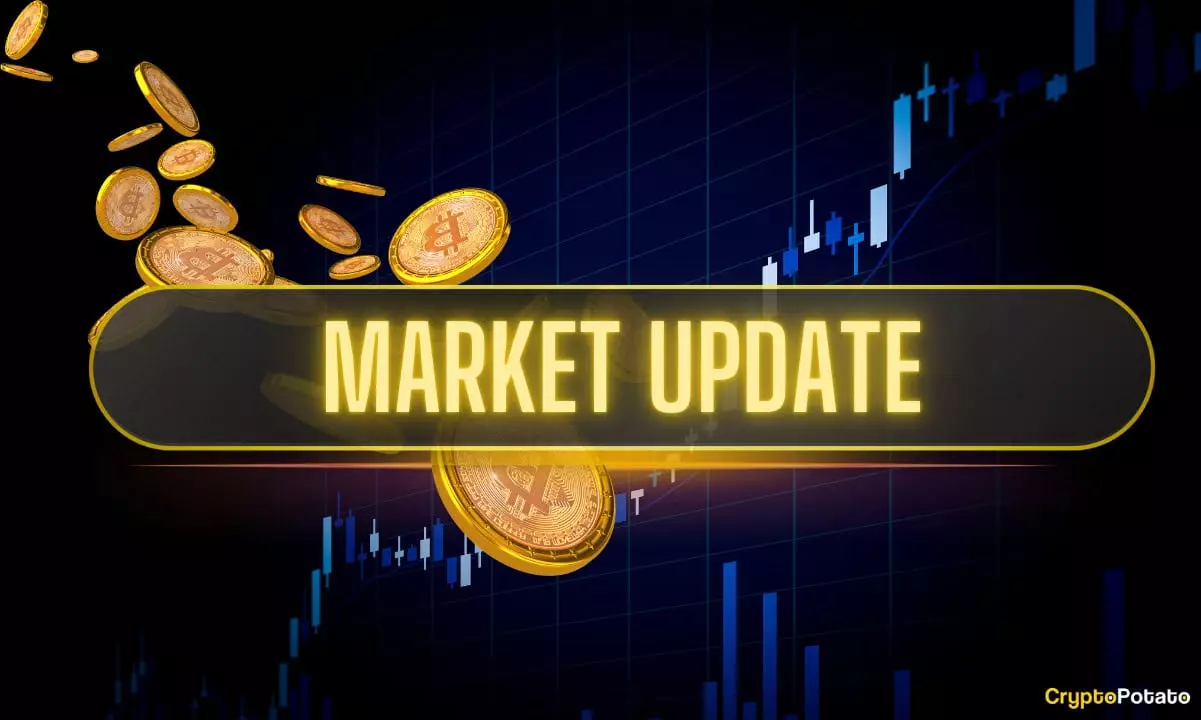In the turbulent world of cryptocurrency, the fluctuations of Bitcoin’s price are often both predictable and perplexing. As anticipated in weeks prior, the digital asset recently encountered a corrective phase after achieving unprecedented heights. Celebrated on May 22, dubbed “Pizza Day,” Bitcoin peaked at nearly $112,000 following months of unyielding competition against economic uncertainty. Investors basked in the glory of this achievement, only to be met with the disheartening reality of a swift downward adjustment soon after. This unease highlights an underlying truth: the cryptocurrency market is as volatile as it is verdant, and even robust gains can swiftly evaporate.
Economic Policies and Market Effects
The recent bearish trend can be traced back to political moves that sent ripples through the cryptocurrency community. President Trump’s newly proposed tariffs aimed at the European Union served as a catalyst, weakening Bitcoin’s momentum and driving its price southward by significant margins. While these tariffs were later suspended, the initial shock made a lasting impression, suggesting that geopolitical policy continues to play a critical role in cryptocurrency valuation. The interdependence between market sentiment and political decisions should not be underestimated, as it reflects a larger concern about how intertwined financial markets are with governmental influences.
In a marketplace where perception often dictates value, the hesitation shown by traders in the wake of these developments is telling. While Bitcoin did regain some footing above the $105,000 mark, the delicate balancing act of investor confidence and external pressures is formidable. Each attempt to push past resistance levels faced immediate discouragement, a clear indicator of the market’s cautious stance.
Rival Coin Performance
While Bitcoin’s slip has generated significant discourse, it’s essential to situate this within the broader context of the cryptocurrency landscape. Other cryptocurrencies such as DOGE, SOL, ADA, and AVAX exhibited alarming declines, some even beyond the 8% mark within the same timeline. This indicates that Bitcoin may be weathering its storms better than many alternatives; however, it does prompt a crucial examination of why these altcoins have faltered even more drastically. The disparity between Bitcoin and its competitors reveals an ongoing struggle within the market—a struggle for trust and stability in an unsteady environment.
The dominance of Bitcoin remains significant, accounting for 60.9% of the total market cap at a staggering $3.445 trillion. Yet, as bubble-like trends continue across various cryptocurrencies, it raises the question of whether the overall market can sustain itself on piecemeal recoveries or if a larger reckoning is on the horizon.
Regulatory Landscape Changes
Amid the tumult, the evolving regulatory framework presents a glimmer of hope. The U.S. Securities and Exchange Commission’s recent dismissal of its lawsuit against Binance suggests a shifting tide, potentially paving the way for more favorable conditions for crypto exchanges. Such decisions can lead to heightened confidence among investors, particularly if they are perceived as moves toward greater regulatory clarity.
Furthermore, the prominence of Bitcoin ETFs, especially BlackRock’s with a staggering $4 billion inflow within two weeks, underscores institutional interest that can buttress Bitcoin’s status in the financial ecosystem. The emergence of large-scale investment firms suggests an institutional validation that holds substantial potential for cryptocurrency’s evolution, despite its current volatility.
Future Outlook and Institutional Interest
As we navigate the perils of this tumultuous market, slight beacons of optimism shine through. Vice President JD Vance’s bold proclamation at the Bitcoin 2025 conference foreshadows an expansive future where ownership could surge to reflect truly staggering figures—up to 100 million BTC holders. The sheer ambition of such a statement speaks volumes about the perceived trajectory of Bitcoin and its potential to penetrate mainstream finance.
Moreover, the recent moves by consumer brands, such as GameStop’s $500 million Bitcoin purchase, and Donald Trump Jr.’s ambitious plans for a $2.5 billion Bitcoin treasury, signal a growing interest in integrating cryptocurrency into established business frameworks. These actions could serve as vital catalysts for Bitcoin’s stability and growth, indicating a future where cryptocurrencies are not just speculative assets but are woven into the fabric of corporate finance.
The journey of Bitcoin, marked by its recent struggles, is emblematic of a larger narrative in the financial sector—a narrative of resilience against adversity, underscored by both external pressures and burgeoning institutional interest. If the crypto market can learn from the lessons embedded in its own volatility, it might just find its footing and emerge stronger in the days to come.

